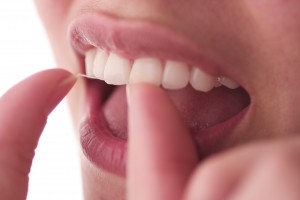 Lasers have been used in medicine and surgery for decades. Chemical teeth whiteners are so common that several low concentration examples are available over-the-counter. What the makers of iBrite have done is to combine the best of both of these technologies to deliver a potent teeth whitening combination.
Lasers have been used in medicine and surgery for decades. Chemical teeth whiteners are so common that several low concentration examples are available over-the-counter. What the makers of iBrite have done is to combine the best of both of these technologies to deliver a potent teeth whitening combination.
The iBrite process begins with by placing a moldable tray to the patient’s upper and lower rows of teeth. The trays hold a proprietary gel that contains more or less inactive teeth whitening agent. Once the tray is inserted, it is left in place for 15 minutes while the whitening gel penetrates into all of the microscopic nooks and crannies in the tooth enamel (the teeth may seem smooth, but they actually have millions of tiny pores).
The next phase of the iBrite treatment is the laser teeth whitening phase. Now that the whitening gel is in contact with all surfaces of the tooth, the iBrite Laser is projected onto to the teeth to activate the gel. Once activated, the gel attacks substances on the teeth that lead to discoloration and yellowing, effectively bleaching the teeth.
The novel approach to the iBrite combination is that it uses a bit of chemistry and physics in the pursuit of cosmetic dentistry. Hydrogen peroxide, H2O2, is an energetic and somewhat unstable molecule. It would much rather be water, H2O, and oxygen. In fact, it is unstable enough that when a molecule of hydrogen peroxide is struck by a photon of light, it breaks apart the molecule into water and elemental oxygen. Elemental oxygen wants to find another atom of oxygen and will do anything to find it, including ripping holes in molecules that stain teeth. If you want some idea of how destructive oxygen radicals are, think about how important antioxidants are— antioxidants are kryptonite for oxygen radicals. Teeth are bleached as oxygen radicals attack stains.
The laser is safe though proper eye protection must be worn by the patient and the operators to guard against retinal damage. The iBrite laser operates in the visible spectrum. In other words, it does not use ultraviolet or infrared radiation. In fact, the light that is emitted by the iBrite laser is blue-green.
Patients notice whiter teeth after just the first visit, but lightening continues with more iBrite treatments. The results that one can expect from iBrite treatment depend on the degree of discoloration and how the teeth are treated afterward. Certain beverages like coffee and red wine will begin to stain teeth as soon as they are used after treatment. Tobacco, either from smoking or chewing, can also undo the benefits achieved from iBrite laser teeth whitening. However, if whitened teeth are well-maintained and kept clean, iBrite can provide dramatic teeth whitening that lasts a very long time.
